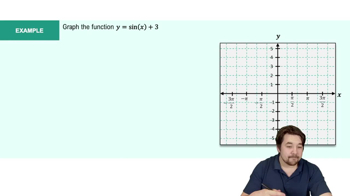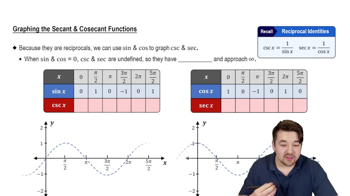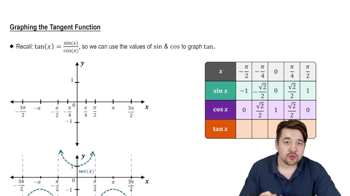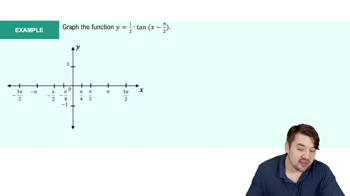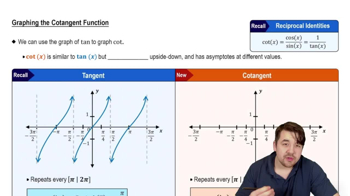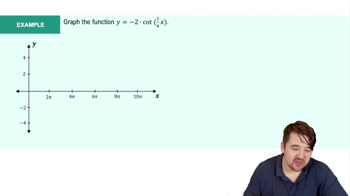Table of contents
- 0. Functions7h 52m
- Introduction to Functions16m
- Piecewise Functions10m
- Properties of Functions9m
- Common Functions1h 8m
- Transformations5m
- Combining Functions27m
- Exponent rules32m
- Exponential Functions28m
- Logarithmic Functions24m
- Properties of Logarithms34m
- Exponential & Logarithmic Equations35m
- Introduction to Trigonometric Functions38m
- Graphs of Trigonometric Functions44m
- Trigonometric Identities47m
- Inverse Trigonometric Functions48m
- 1. Limits and Continuity2h 2m
- 2. Intro to Derivatives1h 33m
- 3. Techniques of Differentiation3h 18m
- 4. Applications of Derivatives2h 38m
- 5. Graphical Applications of Derivatives6h 2m
- 6. Derivatives of Inverse, Exponential, & Logarithmic Functions2h 37m
- 7. Antiderivatives & Indefinite Integrals1h 26m
0. Functions
Graphs of Trigonometric Functions
Problem 108
Textbook Question
Design a sine function with the given properties.
It has a period of 12 with a minimum value of −4 at t=0 and a maximum value of 4 at t=6.
 Verified step by step guidance
Verified step by step guidance1
Identify the general form of a sine function: y = A * sin(B(t - C)) + D, where A is the amplitude, B affects the period, C is the phase shift, and D is the vertical shift.
Determine the amplitude (A) by calculating the difference between the maximum and minimum values, then divide by 2. Here, A = (4 - (-4)) / 2 = 4.
Calculate the vertical shift (D) by finding the average of the maximum and minimum values. Here, D = (4 + (-4)) / 2 = 0.
Use the given period to find B. The period of a sine function is given by (2π / B). Set this equal to 12 and solve for B: 2π / B = 12, so B = 2π / 12 = π / 6.
Determine the phase shift (C) using the information that the minimum value occurs at t = 0. Since the sine function normally has a minimum at -π/2, set B(t - C) = -π/2 when t = 0, and solve for C. This gives C = π/3.
Recommended similar problem, with video answer:
 Verified Solution
Verified SolutionThis video solution was recommended by our tutors as helpful for the problem above
Was this helpful?

 5:53m
5:53mWatch next
Master Graph of Sine and Cosine Function with a bite sized video explanation from Nick
Start learningRelated Videos
Related Practice



